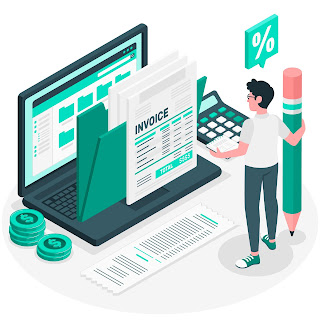How Technology Is Changing How We Treat Payroll Management Software
Payroll is not an industry or practice that has been untouched by technology. Payroll became much simpler thanks to the introduction of excel sheets and more streamlined procedures. The process is now even better thanks to technology, which provides solutions for cloud computing and big data analytics and makes automated solutions accessible thanks to the rise of AI.
Ways in which technology is impacting HR Payroll Software
Cloud Computing
In addition to efficiency, HR Technologist lists flexibility and
cost savings as two additional benefits of cloud computing for payroll
procedures. An organization can increase its use of cloud services as it
expands, eliminating the need to buy expensive hardware or a tonne of extra
software. Any finance or IT function will find regular software updates and
data backups appealing because they lessen concerns about cybercrime and data
loss. Additionally, having data in the cloud enables employees to access it
from anywhere around the clock. As a result, any employee who works remotely
can quickly approve time-off requests from workers and time cards and
regularize any missed punches.
Big Data
Big data has countless uses, and payroll procedures can also gain
from it. For example, big data will become an essential tool for talent
management, ingesting information from evaluations, payroll systems, and other
sources to give the company a clearer picture of its workforce. In the case of
payroll software, management can decide whether it is more cost-effective to
outsource or engage temporary staff to support core teams during workload
spikes if they learn how much overtime an organization is paying employees.
Artificial Intelligence
Artificial intelligence is a different type of technology that
uses big data. Payroll is just one way to use AI in HR payroll software, which
is a data-rich environment that is ideal for it. Through self-service access to
payroll, mentoring, and performance and feedback tools, among other things,
tools like AI and machine learning can also improve the employee experience.
Additionally, it could be used to nurture newly hired staff for leadership
roles by identifying leadership qualities in a pool of employees using an
algorithm, which can also be used to find in-house talent.
Interconnected Technology
Calculations are made more straightforward, and various reports
that can aid a better understanding of the employees are created when payroll
is integrated with timesheet systems that track employee attendance. In
addition, payroll systems are efficient record-keepers, allowing for the
centralization of all information.
Time-saving
Time is saved by technology-assisted payroll management because
it continuously processes massive amounts of employee data. The speed of such
work varies from employee to employee and, if not completed on time, can impact
other core businesses. Payroll
software
also improves the speed and accuracy of calculating net pay and deductions.
Conclusion
All processes will ultimately become more seamless and efficient
as technology changes how HR departments conduct payroll processes. However,
implementing these technologies will take a long time, especially for smaller
businesses. In the interim, there are many alternatives to investing in costly
technology for payroll improvement. Decide to outsource your payroll management
software and tax processes with Opportune
HR if
you want to improve your payroll procedures immediately and learn more about
the best options for your company.



Comments
Post a Comment